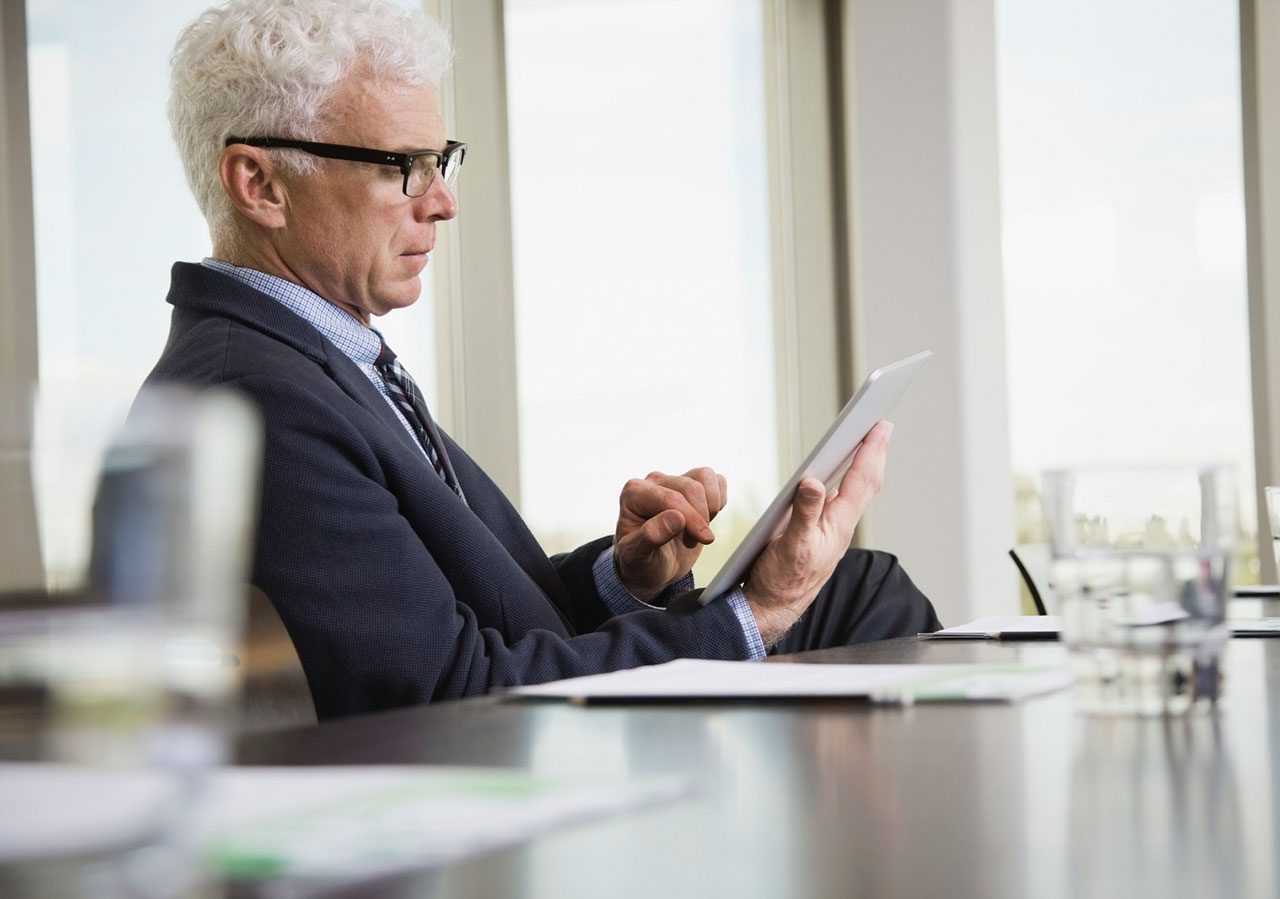
More than ever before, proving the ROI of customer experience is absolutely vital. Businesses are under pressure (amidst the Year of the Squeeze, declining employee engagement, etc.) to look at cutting discretionary spending. And, unfortunately, customer experience programs may fall on the chopping block. In fact, research shows that 30% of businesses reported having budget related issues to their CX programs.
Under all that pressure, how are you supposed to build a CX program that continuously demonstrates its value?
If you are looking to unlock a true return on investment in your experience program, you need to go beyond sending and collecting surveys. You need to craft a strategy that enables you to use customer feedback and employee feedback to take action in strategic areas that actually improve the experience and map to business value.
To help our customers to do just that, we leverage a philosophy we like to call the “Continuous Improvement Framework.”
The Continuous Improvement Framework: A Quick Summary
The Continuous Improvement Framework focuses on building an experience program that moves past measuring and managing what customers are saying and transforms into one that actually improves the customer experience and benefits your business.
To reach the goal of a truly effective, ROI-focused CX program, we cycle our customers through our five step framework. Those steps are:
Design
The road to true experience program success begins with clearly defining an experience strategy that aligns with overall business goals and brand promises and then designing a program purpose-built to support those goals.
Take this opportunity to take a step back, identify goals, and assess the current experience program to see if it is achieving the desired outcomes. This would be a good time to engage in customer journey mapping, to visualize the ideal touchpoints a customer would hit in their journey with your brand.
Listen
Thoughtfully deploy modern listening strategies and data integrations to expand and enhance holistic understanding.
This step revolves around customer feedback. Analyzing feedback from your customers will help you uncover their wants, needs, and expectations.
Understand
Centralize data streams and leverage advanced analytics and behavioral science experts to identify where and how to act—and the anticipated impact.
Merely attuning to customer voices isn’t sufficient for businesses; even if they manage to listen diligently. It’s equally imperative for companies to delve into comprehending the identities of these individuals, enabling a profound grasp of their desires and anticipations. Pinpointing customers empowers brands to prioritize both the amassed insights and any feasible knowledge, culminating in the provision of a heightened, tailored experience.
Transform
Create and implement dynamic actions plans, trainings, and policies that facilitate organizational change and promote revenue-generating activities.
After organizations have lent an ear to their customers and acquired insight into their identities and expectations, it is time to initiate impactful changes or even forge fresh encounters. How can businesses embark on this journey of transformation following attentive customer listening and heightened comprehension? The foremost stride towards effecting any form of change involves sharing these newfound insights among other stakeholders.
Realize
Evaluate and demonstrate results of experience initiatives including organizational change, improved metrics, and financial impact while determining appropriate next steps.
A Common CX ROI Misperception
Where we’ve seen so many brands go wrong on their path to CX ROI is that they are too focused on the “Listen” and “Understand” steps of this framework, and not enough on the other three.
In our latest webinar, “Designing, Actioning, and Realizing a ROI-Focused CX Program,” two of our esteemed experts, Jim Katzman and Eric Smuda, break down the truth behind common difficulties in proving the ROI of customer experience—and discuss why surveys alone do not create ROI.
And because we are all about sharing the best practices you need to overcome obstacles, here is a breakdown of those three necessary keys you need to take your experience program to the next level.
3 Keys to Prove the ROI of Customer Experience
- Design
- Transform
- Realize
Key #1: Design
Design is arguably the most important phase of your experience program. If you build your program on a faulty foundation, the results can be deadly for your program (think lack of actionable insights, false signals, and hours of work that don’t accumulate ROI).
When designing the right program for your business, it is important to shift your focus away from scores, scores, scores. A program that relies too much on scores can hurt your chances of proving ROI. Additionally, if there is too much focus on the financial drivers of the past, there isn’t much room to ideate, test, and implement financial drivers for the future.
So what should you focus on when designing your program? The answer is simple: you need to focus on what you want to get out of the program. And if that’s ROI, you want to build a program that will allow you to capture insights that can be turned into actions that result in financial returns.
In our experience, the four areas most programs prove the ROI of customer experiences in are:
Key #2: Transform
In order to completely transform your experience program, you need to focus on three key processes: organization, action planning and project management.
Organization
Organization refers to how you are taking action, and how that is being implemented across your company. One major step in successful organization comes from developing cross-functional teams and avoiding siloing data from department to department.
Each department needs to be connected to the customer experience and work to support front-line employees. Upward and downward organization will lead to a more holistic customer experience.
Action Planning
Using the Net Promoter System (NPS), you can look at inner loop and outer loop processes for action planning. Inner loop processes are very 1:1 based. They refer to individual customer feedback and the learning, and actions that come from that.
Outer loop processes are when teams meet and determine that they keep hearing similar feedback from multiple customers and that maybe something is going on systemically that is causing issues for many customers. Learning how to close the outer loop and create a culture of customer centricity is incredibly important in order to realize success.
The inner loop is generally focused on short-term action, while the outer loop focuses on structural improvements that may take longer.
Project Management
Whether they be short-term or long-term, you will always have multiple projects going on at the same time. With so many things to do, how do you decide where to focus your efforts? You need to consider how many customers are going to be impacted by this project, what is the cost/benefit of this change, and how easy is the change to implement.
Now, if you design your program thoughtfully, you should be able to use your findings to understand where you focus your efforts to help continuously improve the customer experience.
Key #3: Realize
After you collect insights and take action based on your findings, you need to measure success and then share that proof across the company. Because if you truly can prove the ROI of your customer experience but don’t share it with your stakeholders, how is it helping you in the long run?
It is important to share your wins! Be vocal about the success you have seen from your CX program. Not only will it help show how your program is helping the customer, it will also create a culture of commitment within your business and show your employees that their efforts are being successful.
Additionally, when you are looking to prove the success of your CX program, it is important to partner with your finance department. They are the ones who will help you measure and validate your wins, then turn them into a cost analysis report that your c-suite will want to see.
If you are able to use the metrics your c-suite cares about (customer acquisition, customer retention, customer lifetime value and cost reduction) then your program will become a proven asset in your company, not a liability at risk of being cut.
To Sum It All Up
Proving the ROI of your experience program is crucial. But, it is important to remember that it isn’t always about the money.
Changing your CX program is as much about driving a culture of customer centricity as it is about driving revenue. This cultural journey can be reflected in an increase in employee commitment, and by building a program that delivers as many cultural wins as it does financial wins.
To learn more about how you can transform your CX program into an ROI-Focused, revenue generating machine, watch the full webinar with experts Jim Katzman and Eric Smuda here!











